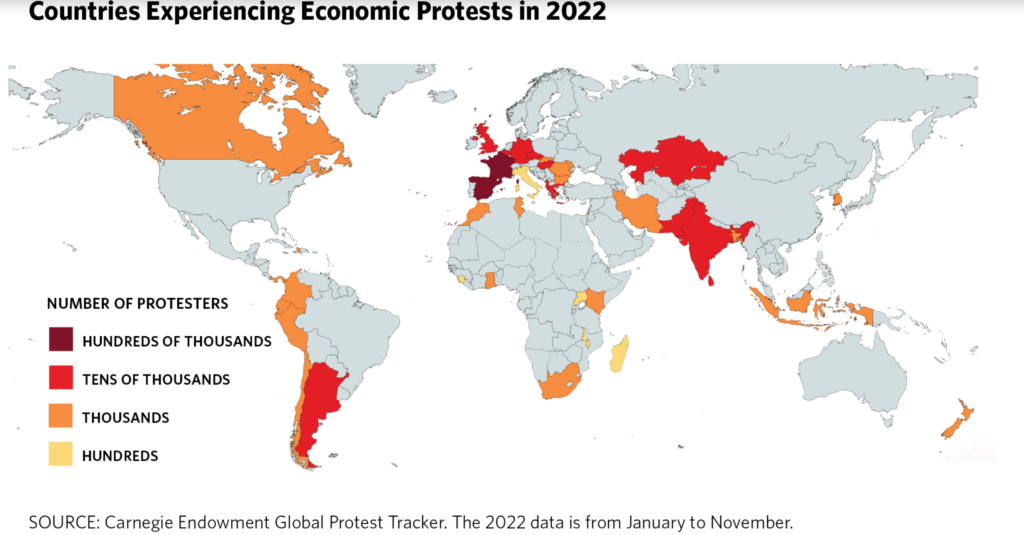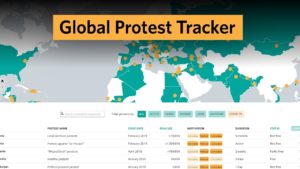
Rising citizen anger about economic problems, especially surging inflation, drove antigovernment protests to a new high in 2022, according to data from the Carnegie Endowment’s Global Protest Tracker.
The number of economic protests—especially those relating to inflation—soared compared to previous years, Carnegie’s Thomas Carothers and Ben Feldman observe. But fewer than one in six major antigovernment protests caused the government to modify relevant policy or provoked a leadership change, which are the thresholds that the Global Protest Tracker uses to register an outcome as significant.

Credit: Carnegie Endowment for International Peace
Sri Lanka and Kazakhstan were two important exceptions, they add:
- In the first, massive, persistent protests that began in March eventually led to the ouster of president Gotabaya Rajapaksa, prime minister Mahinda Rajapaksa, and all twenty-six ministers in the cabinet.
- In the second, protesters forced Nursultan Nazarbayev, president of Kazakhstan from 1991 to 2019 and the power behind the throne thereafter, to relinquish his grip on the country. Nazarbayev resigned from his post as chairman of the Security Council in January.
This low level of significant outcomes is one part of a notable longer-term trend in global protests generally, Carothers and Feldman add. In a broad study of civil resistance movements over decades, Erica Chenoweth, a professor at the Harvard Kennedy School, found a marked decline in the effectiveness of such movements over time. RTWT
A range of restrictions face protesters and activists, according to a new global assessment by the CIVICUS Monitor (below). The 2022 Global Assessment on Protest Rights, shows that violations to protest rights, as covered by international law, occur in over 75% of countries where protests have been recorded.







